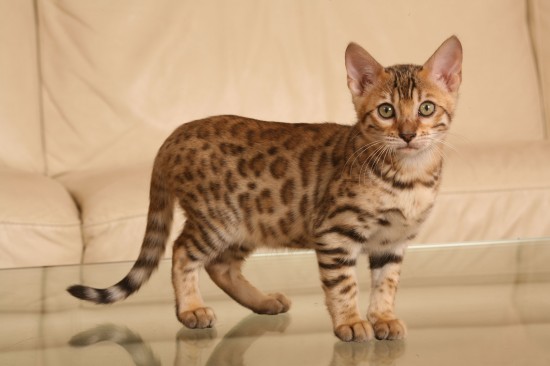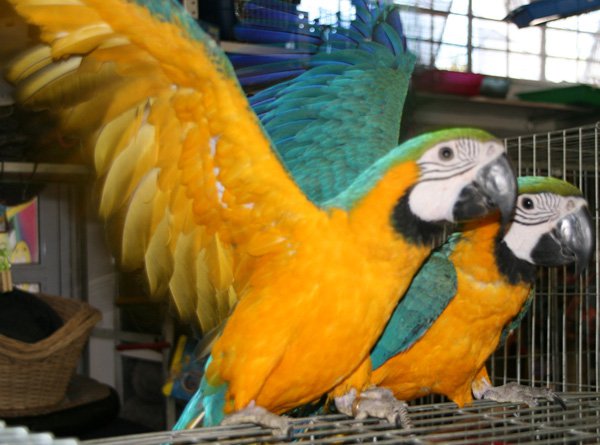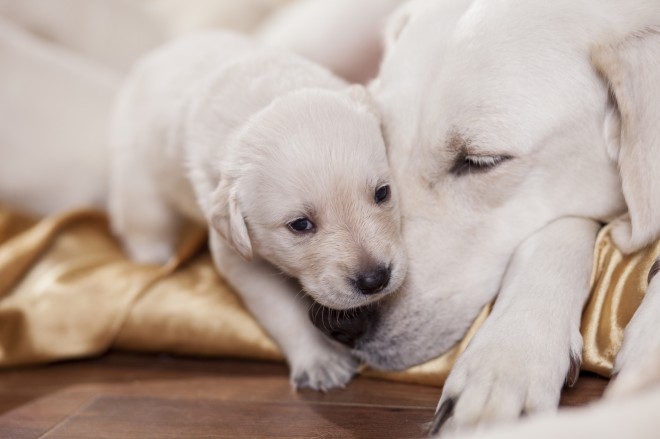
Budgerigars in their natural-habitats of Australia average eighteen cm (seven in) long, weigh 30-40 grams (one.1-1.4 oz), and show a light green body color (abdomen and rumps), although their mantle (back again and wing coverts) display pitch-black mantle markings (blackish in fledgelings and immatures) edged in obvious yellow undulations. The forehead and encounter is yellow in adults but with blackish stripes down for the cere (nose) in young individuals until they change into their grownup plumage about 3-4 months of age. They display tiny, purple patches (referred to as cheek patches) along with a sequence of three black spots across each and every sides of their throats (called throat-spots). The two outermost throat-spots are situated in the foundation of each cheek-patch. The tail is cobalt (dark-blue); outside tail feathers show central yellow flashes. Their wings have greenish-black flight feathers and black coverts with yellow fringes along with central yellow flashes, which only turns into visible in flight or once the wings are outstretched. Expenses are olive grey and legs blueish-grey, with zygodactyl toes.
Budgerigars within their natural habitat in Australia are noticeably smaller than these in captivity. This specific parrot species is bred in many other colors and shades in captivity (e.g. blue, grey, grey-green, pieds, violet, white, yellow-blue), even though they’re mostly discovered in pet shops in blue, green, and yellow. Like most parrot species, budgerigar plumage fluoresces below ultraviolet light. This phenomenon is probably related to courtship and mate selection.
The upper fifty percent of their beaks is a lot taller than the bottom 50 % and covers the bottom when closed. The beak doesn’t protrude much, on account of the thick, fluffy feathers surrounding it, providing the appearance of a downward-pointing beak that lies flat towards the encounter.
The color in the cere (the region containing the nostrils) differs in between the sexes, becoming royal blue in males, pale brown to white (non-breeding) or brown (breeding) in females, and pink in immatures of both sexes (typically of the much more even purplish-pink colour in young males). Some feminine budgerigars develop brown cere only for the duration of breeding time which later returns to the typical colour. Young females can often be recognized by a delicate chalky whiteness that starts around the nostrils. Males which are both Albino, Lutino, Dark-eyed Obvious or Recessive Pied (aka Danishpied aka Harlequin) usually retain the immature purplish-pink cere color their whole everyday life.
It is usually straightforward to inform the intercourse of a budgerigar over six months outdated, mainly from the cere colors, but behaviours and head shape also help indicate intercourse.
A mature male’s cere is typically light to darkish blue, but might be purplish to pink in a few certain colour mutations (DarkEyedClears, Danishpieds aka Recessivepieds and Inos) which generally display substantially rounder heads. Males are usually cheerful, extroverted, highly flirtatious, peacefully social, and really vocal.
Females’ ceres are pinkish as immatures and change from becoming beigish or whitish outside breeding problem into brown (frequently with a ‘crusty’ texture) in breeding problem and typically show flattened again of heads (proper over the nape area). Females are ordinarily extremely dominant and far more socially intolerant.
If you want to learn more about our friends the Budgerigar or Parakeet head on over to our website to learn more
 How To Keep Your Home Clean And Hygienic When You Own A Dog
How To Keep Your
How To Keep Your Home Clean And Hygienic When You Own A Dog
How To Keep Your
 Is The Bengal The Cat For You?
Is The Bengal The
Is The Bengal The Cat For You?
Is The Bengal The
 Horsemeat In Uk Meals - Understanding The Issues
Horsemeat In Uk M
Horsemeat In Uk Meals - Understanding The Issues
Horsemeat In Uk M
 Now drones to track, search and find your pets
Now drones to track, search and find your pets
Now drones to track, search and find your pets
Now drones to track, search and find your pets
 Breeding From Your Dog - Caring For The Dam After The Birth
Breeding From You
Breeding From Your Dog - Caring For The Dam After The Birth
Breeding From You
Copyright © 2005-2016 Pet Information All Rights Reserved
Contact us: www162date@outlook.com